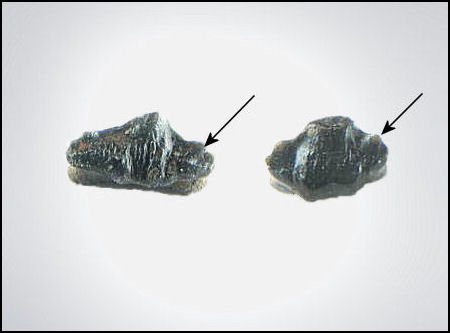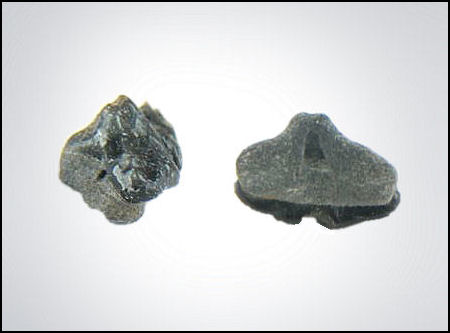|
Nurse Shark Age - Cretaceous Commonality - Very uncommon? One of two species of nurse shark found in NJ, Cantioscyllium decipiens was added to the fauna list of New Jersey in 2008 ¹ The teeth of C decipiens are small, averaging between 4 and 5 mm (3/16's of an inch) across and similar to the teeth of the other nurse sharks. Distinguishing characteristics of C decipiens are the presence of one to three weak cupslets on each shoulder and strong wrinkles on the labial side of the tooth. The root has a single large medial nutrient pore and a single pair of lateral pores.
The teeth of C. decipiens are small averaging
between 4 and 5mm.
One of the characteristics that distinguish C.
decipiens from the other
The cusplets on this species is best described as weak
and can vary in
There is a single large medial nutrient pore and a
single pair of
Left - profile view Right - view of the bottom of the
root.
The main cusp of Cantioscyllium decipiens is
relatively large. Although
Three teeth perched on top of a quarter gives a good
perspective ¹ Mehling, C. M., W. R. Callahan, and M. P.
Garb. 2008. Revision of the Late Cretaceous (Campanian) Vertebrate Fauna
at Ramanessin Brook, NJ. In Press. |

